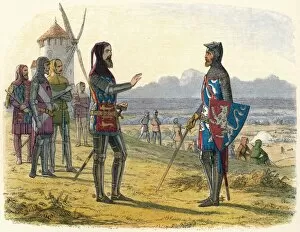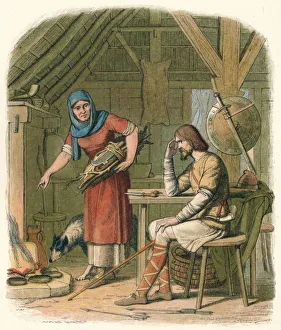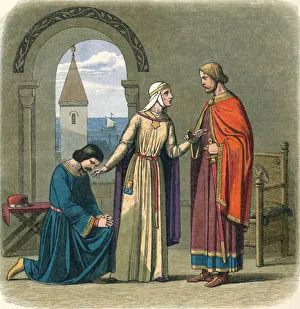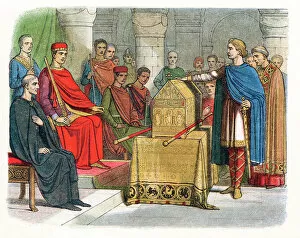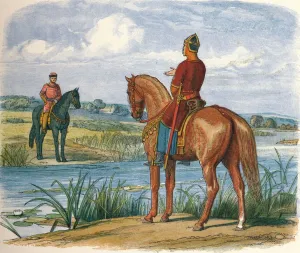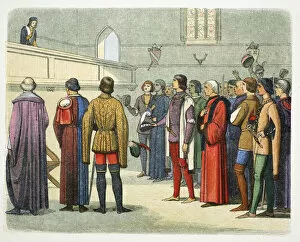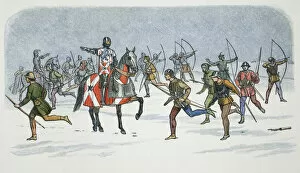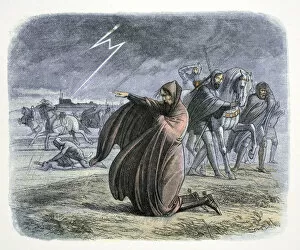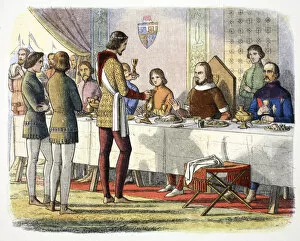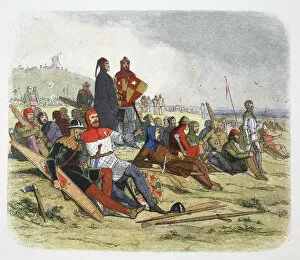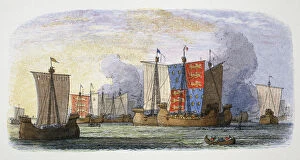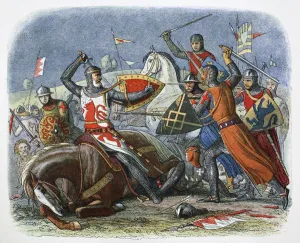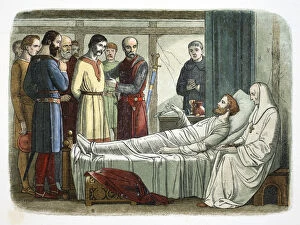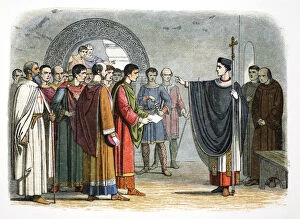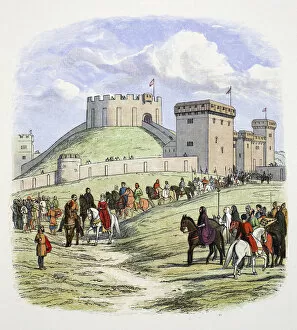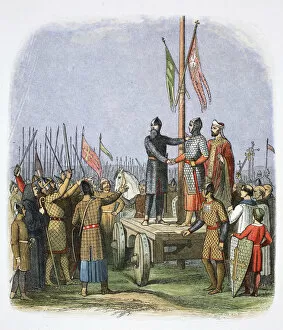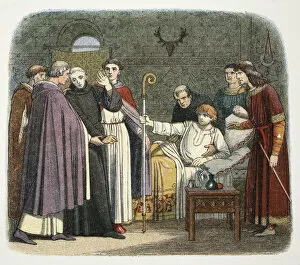James William Edmund Doyle Collection
"James William Edmund Doyle
All Professionally Made to Order for Quick Shipping
"James William Edmund Doyle: A Glimpse into Historical Moments through Captivating Art" Step back in time and immerse yourself in the intricate world of history with the remarkable works of James William Edmund Doyle. This talented artist brings to life pivotal moments that shaped England's past, capturing the essence of bravery, betrayal, and triumph. In "Edward refuses succour to his son at Crecy, 1346, " we witness a heart-wrenching scene as King Edward III denies aid to his wounded son during the Battle of Crecy. Doyle's brushstrokes evoke raw emotion, reminding us of the sacrifices made on the battlefield. Transporting us further back in time, "Alfred in the neatherds cottage, c878" reveals a humble yet determined King Alfred seeking refuge amidst adversity. The rustic setting beautifully contrasts with Alfred's regal presence, symbolizing resilience against all odds. Doyle delves into family dynamics with "Richard pardons his brother John, 12th Century. " Here we witness Richard I showing mercy towards his treacherous sibling John after their bitter conflict. The painting captures both forgiveness and tension within this complex relationship. The last Anglo-Saxon king takes center stage in "Harold II, last Anglo-Saxon king of England. " With meticulous detail and rich colors, Doyle portrays Harold II contemplating an uncertain future before facing his tragic fate at Hastings – a poignant reminder of lost dynasties. Love finds its way even amidst political turmoil in "Edward IV and Lady Elizabeth Grey. " This enchanting piece depicts their secret marriage amid roses blooming against turbulent times—a testament to love overcoming obstacles. Henry II and Stephen engage in intense negotiations across London's Thames River in "Henry and Stephen confer across the Thames. " Through skillful use of light and shadow, Doyle captures not only their rivalry but also hints at potential unity for a divided kingdom.

